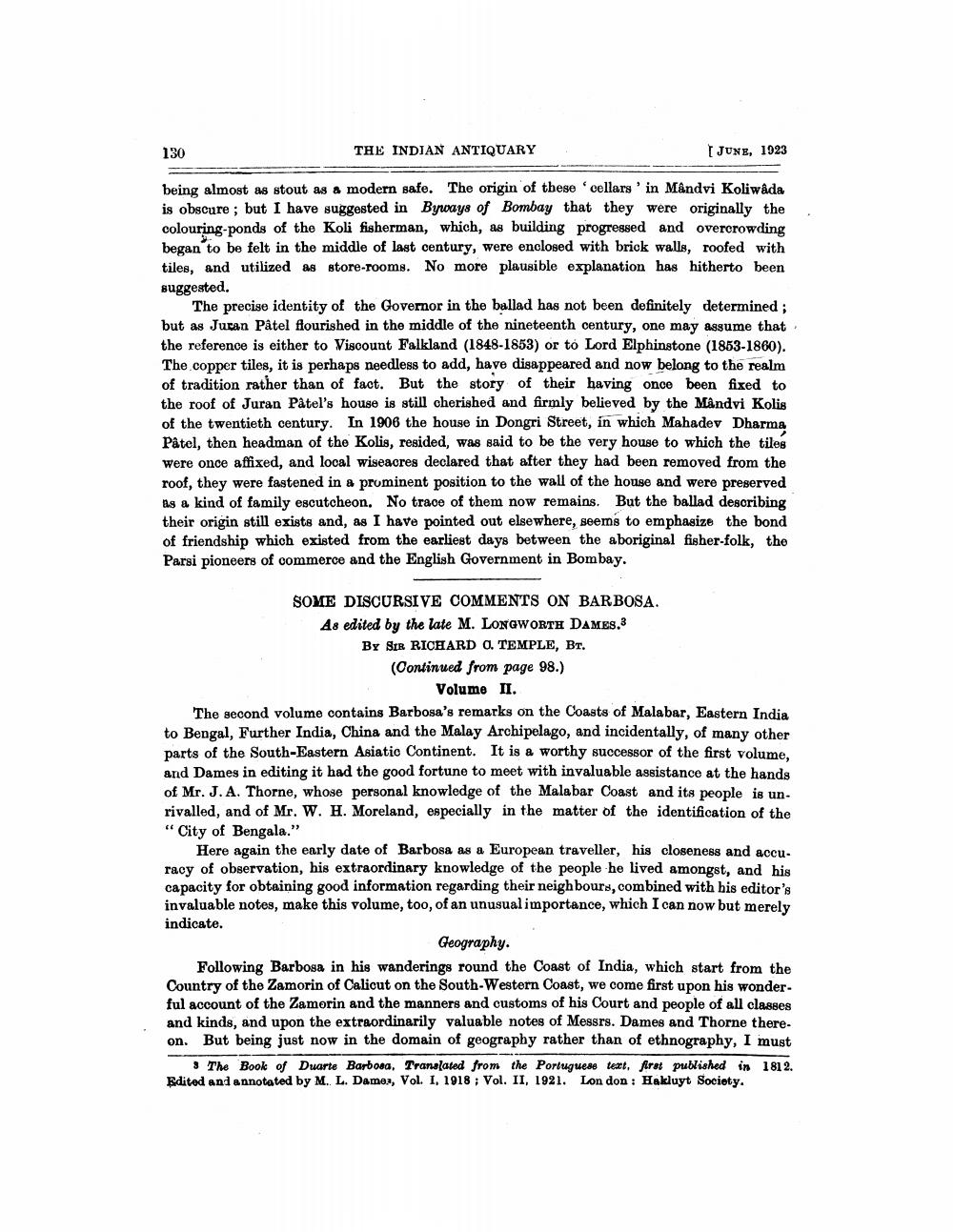________________
130
THE INDIAN ANTIQUARY
JUNE, 1923
being almost as stout as a modern safe. The origin of these cellars in Mandvi Koliwada is obscure ; but I have suggested in Byways of Bombay that they were originally the colouring-ponds of the Koli fisherman, which, as building progressed and overcrowding began to be felt in the middle of last century, were enclosed with brick walls, roofed with tiles, and utilized as store-rooms. No more plausible explanation has hitherto been suggested.
The precise identity of the Governor in the ballad has not been definitely determined ; but as Juran Patel flourished in the middle of the nineteenth century, one may assume that the reference is either to Viscount Falkland (1848-1853) or to Lord Elphinstone (1863-1860).
The copper tiles, it is perhaps needless to add, have disappeared and now belong to the realm of tradition rather than of fact. But the story of their having once been fixed to the roof of Juran Patel's house is still cherished and firmly believed by the Mandvi Kolis of the twentieth century. In 1906 the house in Dongri Street, in which Mahadev Dharma Pâtel, then headman of the Kolis, resided, was said to be the very house to which the tiles were once affixed, and local wiseacres declared that after they had been removed from the roof, they were fastened in a prominent position to the wall of the house and were preserved as a kind of family escutcheon. No trace of them now remains. But the ballad describing their origin still exists and, as I have pointed out elsewhere, seems to emphasize the bond of friendship which existed from the earliest days between the aboriginal fisher-folk, the Parsi pioneers of commerce and the English Government in Bombay.
SOME DISCURSIVE COMMENTS ON BARBOSA. As edited by the late M. LONGWORTH DAMES.3
BY SIR RICHARD O. TEMPLE, Bt. (Continued from page 98.)
Volume II. The second volume contains Barbosa's remarks on the Coasts of Malabar, Eastern India to Bengal, Further India, China and the Malay Archipelago, and incidentally, of many other parts of the South-Eastern Asiatic Continent. It is a worthy successor of the first volume, and Dames in editing it had the good fortune to meet with invaluable assistance at the hands of Mr. J.A. Thorne, whose personal knowledge of the Malabar Coast and its people is unrivalled, and of Mr. W. H. Moreland, especially in the matter of the identification of the "City of Bengala."
Here again the early date of Barbosa as a European traveller, his closeness and accuracy of observation, his extraordinary knowledge of the people he lived amongst, and his capacity for obtaining good information regarding their neighbours, combined with his editor's invaluable notes, make this volume, too, of an unusual importance, which I can now but merely indicate.
Geography. Following Barbosa in his wanderings round the coast of India, which start from the Country of the Zamorin of Calicut on the South-Western Coast, we come first upon his wonderful account of the Zamorin and the manners and customs of his Court and people of all classes and kinds, and upon the extraordinarily valuable notes of Messrs. Dames and Thorne there. on. But being just now in the domain of geography rather than of ethnography, I must
3 The Book of Duarte Barbosa, Translated from the Portuguese text, first published in 181 2. Edited and annotated by M. L. Dame, Vol. I, 1918; Vol. II, 1921. London: Hakluyt Society.




